Defining your company culture video objectives
Creating an About Us Culture Video demands clear goals beyond simply showcasing workplace life. Teams should pinpoint their primary audience, whether potential hires, customers, or internal staff, and align video objectives with broader company strategies. Translating high-level aims into tangible video outcomes is essential. For instance, a goal might be increasing applications for specific roles or boosting employee engagement with new initiatives. (Source:)
Implementing clear, action-oriented calls to action is vital. Instead of vague prompts, use specific text tailored to the viewer journey, such as "Explore Open Roles" or "Learn About Our Values." Measuring the impact involves tracking costs against generated value, like attributing application starts or website visits directly from video views. They can monitor effects on the sales cycle or support inquiries, demonstrating tangible returns. (Source:,)
- Use analytics tools to understand viewer engagement, identifying compelling segments and points where interest wanes.
- Showcase authentic interactions and demonstrate how values appear in daily tasks and real-world scenarios.
- Incorporate social proof, perhaps brief flashes of partner logos or mentioning statistics about satisfied team members.
- Plan A/B tests for various elements like thumbnails or calls to action to refine effectiveness.
Adapting content for different platforms is key, considering viewer intent and environment. A brand culture video shared on social media might need to be shorter and engaging without sound, while a version on a career page can offer more detail. This strategic approach ensures each video works hardest where it matters most.
Featuring employee voices in your company culture video
Capturing the essence of a workplace goes beyond mission statements; it lies in the voices living that experience daily. They offer an unfiltered lens into company life, building immediate trust with those seeking to understand the real environment. A powerful format to achieve this is the employee spotlight video, shining a light on individual journeys and collective spirit.
Featuring diverse team members provides a comprehensive picture, making the culture feel accessible and relatable. Real-world scenarios, where employees demonstrate collaboration or tackle daily tasks, make the abstract tangible for viewers. Companies find that analyzing viewer behavior, perhaps through heatmaps, helps pinpoint moments resonating most, refining content for greater connection.
Measuring the impact of these efforts involves more than just view counts. They track tangible value, such as increases in qualified applications or how faster candidates move through the hiring process. Incorporating social proof, like showcasing team achievements through employee testimonials, enhances external credibility. Continuously refining approach through A/B testing various elements, from introductory hooks to calls to action, ensures maximum effectiveness.
- Authentic narratives build immediate trust.
- Diverse perspectives show a comprehensive workplace view.
- Real-world scenarios make roles relatable.
- Analyzing viewer behavior refines content effectiveness.
- Action-oriented calls guide viewer response.
Ultimately, allowing employees to share their stories in a corporate culture video transforms the abstract concept of culture into a vibrant, believable reality.
Showcasing leadership perspective on workplace culture
Leaders view authentic portrayal of the workplace not merely as showcasing perks but strategically communicating core values. They understand that a compelling company story video can articulate their mission and connect with individuals seeking purpose-driven work environments. Success extends beyond initial views; they prioritize clear, specific calls to action. Instead of generic prompts, tailored actions like "Apply Now" or "Meet the Team" guide interested candidates effectively.
Measuring impact remains a key focus for leadership teams. They track production costs against tangible gains, such as increases in qualified applicants or reduced time-to-hire for specific roles. Demonstrating how the company integrates into existing professional workflows or solves real challenges within the field adds significant perceived value for potential colleagues.
Analyzing how viewers engage provides critical insights. Leaders utilize video analytics, including attention tracking, to understand which aspects of the culture resonate most and where interest might drop. This data-driven approach informs iterative improvements to their employer brand video content, ensuring it accurately reflects the evolving workplace and attracts the most suitable talent. Incorporating social proof, like featuring employee testimonials or team collaborations, builds credibility.
Strategic deployment across different platforms also receives careful consideration. Leaders recognize that effective videos are optimized for the intended viewing environment, whether short, attention-grabbing clips for social feeds or more detailed content for career pages. Testing different approaches allows them to refine messaging and maximize reach among target audiences.
Portraying company values authentically in video
Readers familiar with the foundational impact of culture videos understand their power in connecting with audiences. Moving beyond the initial appreciation, crafting these visual narratives demands strategic execution to ensure values truly resonate. It involves showing company principles in action through authentic scenarios, allowing viewers to see how values translate into daily operations and interactions. Integrating these principles into demonstrations of products or services within relevant contexts makes them relatable and believable, showcasing inherent value beyond features. Crucially, directing viewers toward specific actions completes the communication loop, turning passive watching into active engagement aligned with objectives.
To gauge effectiveness, looking beyond simple view counts becomes essential. Success measurement ties back to business goals, tracking contributions to tangible outcomes. This might involve monitoring increases in qualified leads generated directly from video engagement or noting reductions in support inquiries from users better informed by the content. Understanding how viewers interact with the video provides invaluable insights, revealing what holds attention or where interest wanes. Analyzing this viewer data allows for targeted refinement, enhancing future content for greater impact.
Building external credibility amplifies internal culture messaging. Incorporating social validation, such as showcasing recognizable client logos or sharing statistics on user satisfaction, quickly establishes trust with prospective customers and employees. Applying experimental approaches refines video elements for optimal performance. Testing variations in introductions, calls to action placement, or even slight script adjustments reveals what resonates strongest with the intended audience, driving improved conversion rates.
- Utilize video analytics tools to pinpoint exact moments viewers watch closely or where they drop off, guiding precise content adjustments.
- Weave in genuine testimonials or user statistics as powerful social proof within narratives, adding layers of credibility.
- Conduct A/B testing on different versions of your About Us Culture Video example, comparing metrics like engagement duration or CTA click-through rates.
- Adapt content format and length to suit specific distribution channels, ensuring relevance and engagement whether seen in a fast-paced social feed or on a detailed web page, remembering mobile-first viewing habits.
Carefully optimizing each element, from the initial concept showcasing an employee story video to the final call for engagement, maximizes the potential of culture content.
Ensuring authentic culture depiction in your video
Beyond understanding the importance of tailoring content for different platforms and audiences, and leveraging storytelling, lies the critical step: ensuring the authentic culture depicted truly connects and delivers measurable results. This means moving beyond simply showing scenes to strategically refining how that authenticity is presented and understood by viewers. Showcasing real-world scenarios where your team navigates challenges or celebrates wins offers a tangible look at daily life, providing a powerful brand culture video example. Integrating social proof, such as glimpses of client logos or team testimonials, further solidifies the credibility of the culture being shared.
Understanding how viewers interact with your video is paramount. Tools providing heatmaps and attention tracking reveal precisely which moments resonate and where engagement drops. This data highlights the authentic instances that capture interest, allowing creators to refine content for maximum impact. A typical corporate culture video example benefits immensely from this analysis, ensuring the aspects they want to showcase are effectively communicated. This granular feedback loop is essential for continuous improvement, transforming a good video into a truly effective one that drives viewer action.
Clear, actionable calls to action are the bridge between viewer engagement and desired outcomes.
- Implement specific calls to action like "Apply Now" or "Meet the Team," directly guiding interested viewers.
- Measure success by tracking metrics tied to business goals, such as qualified applicants or website conversions originating from the video.
- Utilize viewer analytics platforms to analyze engagement patterns and identify high-impact segments showing genuine culture.
- Conduct A/B testing on elements like video thumbnails or the opening seconds to optimize initial viewer interest and click-through rates.
Blending authentic portrayal with strategic measurement unlocks video potential.
Crafting a compelling company culture video narrative
Crafting a compelling company culture video narrative begins with defining a clear purpose and understanding the intended audience. Develop a central narrative thread that goes beyond stating values, instead weaving them into a story reflecting the organization's spirit and aspirations. Consider how different formats serve this purpose; a company story video example can provide historical depth and context for current culture.
Connecting video efforts to tangible business outcomes is crucial. This involves measuring ROI by tracking production costs against the value generated. Value might manifest as increased qualified leads who understand the company, potentially shortening sales cycles, or even reduced support queries from well-informed audiences engaging with the culture presented.
Sustained impact requires continuous refinement based on performance. Analyze viewer behavior to understand engagement levels and drop-off points. Adapt content and strategy using insights gleaned from how people actually watch and interact. Employing A/B testing on various elements allows discovering what resonates most powerfully with the target audience.
- Implement specific, action-oriented clear calls to action guiding viewers next steps.
- Showcase culture within real-world scenarios demonstrating values in action. An employee spotlight video example highlights individual contributions embodying company culture.
- Integrate social proof subtly to build immediate credibility and trust with viewers.
- Leverage analytics tools tracking heatmaps and attention to pinpoint video segments effectiveness.
Ultimately, a compelling narrative emerges from thoughtful strategy, authentic portrayal through relevant scenarios, and a commitment to optimization informed by data and audience engagement across platforms.
Aligning company culture video with overall brand identity
Beyond simply showcasing workplace dynamics, culture videos become powerful brand tools when intentionally aligned with overall identity. This strategic connection ensures the message resonates authentically with both internal teams and external audiences. Achieving this alignment requires careful consideration of how every element, from narrative to visual style, reflects core company values and strategic objectives.
Guiding viewers effectively means incorporating clear and specific calls to action. Instead of generic prompts, employing action-oriented language like 'Request a Demo' or 'Download the Report' directly ties video engagement to tangible business outcomes aligned with the brand purpose. Understanding the return on investment involves tracking production costs against the value generated, such as increasing qualified leads or shortening sales cycles for better-informed prospects. Measuring impact also includes noting decreases in support ticket volume from users gaining clarity from video content.
Utilizing real-world scenarios makes the brand connection believable. Demonstrating how company culture influences daily tasks or showing product features within relevant contexts increases perceived value by illustrating practical application. Analyzing viewer behavior through tools like heatmaps reveals exactly which parts of an employer brand video example hold attention, providing data to refine messaging and structure for better alignment. Incorporating social proof, perhaps brief flashes of recognizable logos using the product or mentioning user statistics, quickly builds credibility and trust in the brand's standing.
- Conducting A/B testing on elements like thumbnail images, introductory seconds, or call to action wording helps refine the message that best resonates with the target audience, ensuring the video effectively communicates brand identity.
- Adapting content for different platforms is crucial; a short, attention-grabbing employee story video example for social feeds differs significantly from a more detailed piece embedded on a product page, each requiring tailored approaches to maintain consistent brand messaging.
- Showing how culture translates into solving problems specific to a user's industry or daily tasks increases the video's perceived value and strengthens the brand connection.
- Using attention-tracking tools integrated with video players provides granular data invaluable for identifying confusing segments or points where interest drops, allowing for precise adjustments to enhance clarity and brand perception.
Using culture videos for internal sharing
Culture videos offer strategic advantages extending beyond external audiences. Teams utilize them cultivating internal alignment. Videos foster shared purpose reinforcing company values. Reviewing an About Us Culture Video sample helps teams understand messaging style apply principles internally.
Applying strategic principles enhances internal video impact. Clear calls guide employee action. Measuring video value involves tracking internal metrics. Viewing a Brand culture video sample aids understanding company ethos representation. Value tracking includes time saved knowledge transfer reduced onboarding duration.
Showing internal processes real scenarios increases relevance understanding. Analyzing viewer engagement reveals comprehension points areas needing clarity. Tracking watch patterns identifies content effectiveness. Incorporating internal project success stories builds team morale provides social proof. Experimenting with video elements refines internal communication delivery maximizing impact. Adapt content internal platform viewing needs ensuring accessibility relevance.
- Craft precise internal calls action guiding employee next steps participation.
- Evaluate internal video success tracking relevant metrics demonstrating value.
- Leverage viewer data optimizing internal content effectiveness engagement levels.
- Conduct internal A/B tests refining messaging delivery maximizing comprehension.
Strategic internal video use strengthens company fabric boosts collective understanding.
Making your culture video appeal to prospective employees
Attracting prospective employees means clearly showing them what joining a team truly entails. Beyond static descriptions, video offers a dynamic window into daily life and company values. Organizations seeking the right talent understand the need to tailor their visual message specifically for job seekers, providing insights that resonate deeply and encourage taking the next step.
Measuring the impact of these videos is crucial for understanding their effectiveness. Teams can track the cost of creating content against the value generated, looking at metrics like increased quality applications or reduced time-to-hire. Analyzing viewer behavior provides granular data, revealing which parts of a corporate culture video sample hold attention or where interest drops, guiding future content refinement. This data-driven approach helps optimize investment.
Authenticity builds connection. Showcasing real employees in actual work scenarios, perhaps through an employee spotlight video sample, makes the culture tangible. Including social proof, like brief mentions of partners or user statistics, adds credibility. Adapting content for different platforms is also key, recognizing that a short, attention-grabbing clip for social feeds differs from a more detailed view suitable for a careers page.
- Craft calls to action that are specific to recruitment, directing viewers to apply or explore open positions.
- Utilize A/B testing for different video elements such as thumbnails or introductory hooks to see what resonates most with potential candidates.
- Optimize video content and format for various platforms where prospective employees spend their time, considering viewing habits and device use.
- Integrate real-world challenges and how teams collaborate to overcome them, showing problem-solving in action.
Ultimately, a compelling culture video acts as a powerful recruitment tool, inspiring the right individuals to envision their future with the organization.
Capturing team collaboration dynamics on video
Capturing genuine team collaboration dynamics requires intention beyond simple group shots. Viewers connect deeply with a company's journey, especially when a company story video sample highlights moments of teams overcoming challenges together. Demonstrating how different roles and personalities converge on common goals offers a compelling look inside the workplace engine. Showing real team interactions organically, not staged scenarios, builds trust and provides potential candidates a window into their future colleagues and daily environment.
Showcasing specific instances of teamwork solving problems or achieving milestones makes the abstract concept of "collaboration" tangible. Viewers want to see not just *that* teams work together, but *how*. This involves capturing authentic language, spontaneous moments, and the energy present when individuals contribute to a collective success. Highlighting integration into workflows or tackling industry-specific tasks increases perceived value for those evaluating career moves. Crafting an appealing employer brand video sample often involves demonstrating a cohesive, supportive team environment that potential hires seek.
To ensure these captured dynamics resonate and drive desired actions, strategic implementation and measurement prove vital. Clear calls to action appearing at the video end guide interested viewers on next steps. Instead of vague prompts, use action-oriented text specific to talent attraction or deeper engagement. Measuring video effectiveness involves tracking the costs against generated value, such as increased applications from qualified candidates who understand the culture.
- Action-oriented CTAs might include "Explore Open Roles" or "Connect with Our Team."
- ROI measurement can involve tracking candidate source data and time-to-hire reduction.
- Analyzing viewer behavior using analytics reveals which collaborative moments hold attention or lead to drop-offs.
- A/B testing variations in portraying team interactions or CTA wording refines the message.
Ultimately, effectively showcasing team dynamics provides potential hires a sense of belonging before they even apply, attracting individuals who thrive in a collaborative atmosphere.








